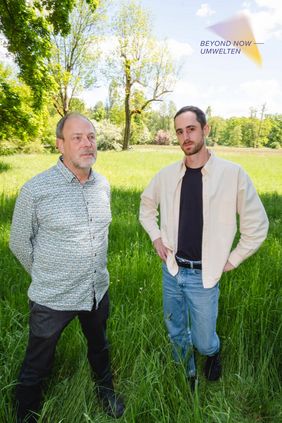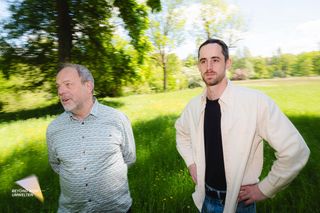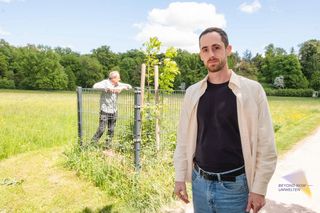
BEYOND NOW – PostCompost: Students Look at the Thuringian Forest Through an Artistic Research Lens
Klaus Fritze-Herbst came up with the idea during one of his numerous expeditions through the Thuringian Forests. The region is seriously suffering as a result of climate change; heatwaves, drought, and bark beetles are particularly hard on the spruce monocultures. »The landscape is changing radically as a result«, explains Fritze-Herbst in an interview. »The motif of the disappearing forest is incredibly intriguing. It not only alters the landscape, but also affects society, tourism, and the economy. In places where spruce trees die or are cut down, new habitats with new conditions emerge. This is something I wanted to look at more closely, and that’s where Christian Doeller came in.«
Christian Doeller and Klaus Fritze-Herbst know each other from an earlier teaching project in the Media Art and Design degree programme. Two years ago, together with the students, they researched how a former industrial wasteland was reclaimed by nature »From that point, we decided to focus our attention on the forest«, explains Doeller. An appropriate site close to Weimar was found at the Hohenfelden Resevoir, where the forest dieback effects can be seen and felt. After a phase including theoretical and practical input from forestry and art experts, an expedition will be made into the forest area.
Thirteen students will spend several days at an outdoor camp, exploring the forest as an artistic research group. »We’re focussing initially on closely observing and analysing the ecological processes on site«, continues Doeller. »The students are expected to carry out artistic research. There are several approaches to this – photography, for example, or collecting data using sensors and 3D scanning. The students are free to select their mediums«. Each and every student should take their own approach to this piece of forest in transition and develop a narrative from it, which will then be brought to life using artistic methods.
This »translation« of their own intensive observations can differ greatly from one another. »We all have different artistic strategies at our disposal«, says Doeller. »Performative work, photography and moving images, microscopic observations, archives, or installations might be the result.« The outcome will be narratives that provide a multifaceted view of a forest in transition, a view that leaves us astonished and that raises questions. Anyone wishing to see, hear, and feel more is warmly invited to the »summaery2025« annual exhibition.
The »PostCompost – Forest Reset« project is offered by Klaus Fritze-Herbst, scientific associate, and Christian Doeller, artistic staff member, in the professorship of »Media Environments«. Students from three faculties and six degree programmes are involved in the project.
The project is funded by the Bauhaus-Universität Weimar as part of the »Beyond Now ⸺ Environment« annual theme.
Project Coordinators:
Mujahid Ali, Fritzi Mathilda Buhtz, Dania González Sanabria, Johann Joesten, Nina Kegel, Zakhar Komarov-Zelinskii, Katharina Langenhan, Krittaporn Mahaweerarat, Jan Munske, Tan Oktik, Leandra Schieder, Adam Schmidt, Ayca Tugran
Text: Romy Weinhold
Photos: Julian Linden
Social Media: Marit Haferkamp
Signet: Romi Klockau
Concept and Editorial: Claudia Weinreich


